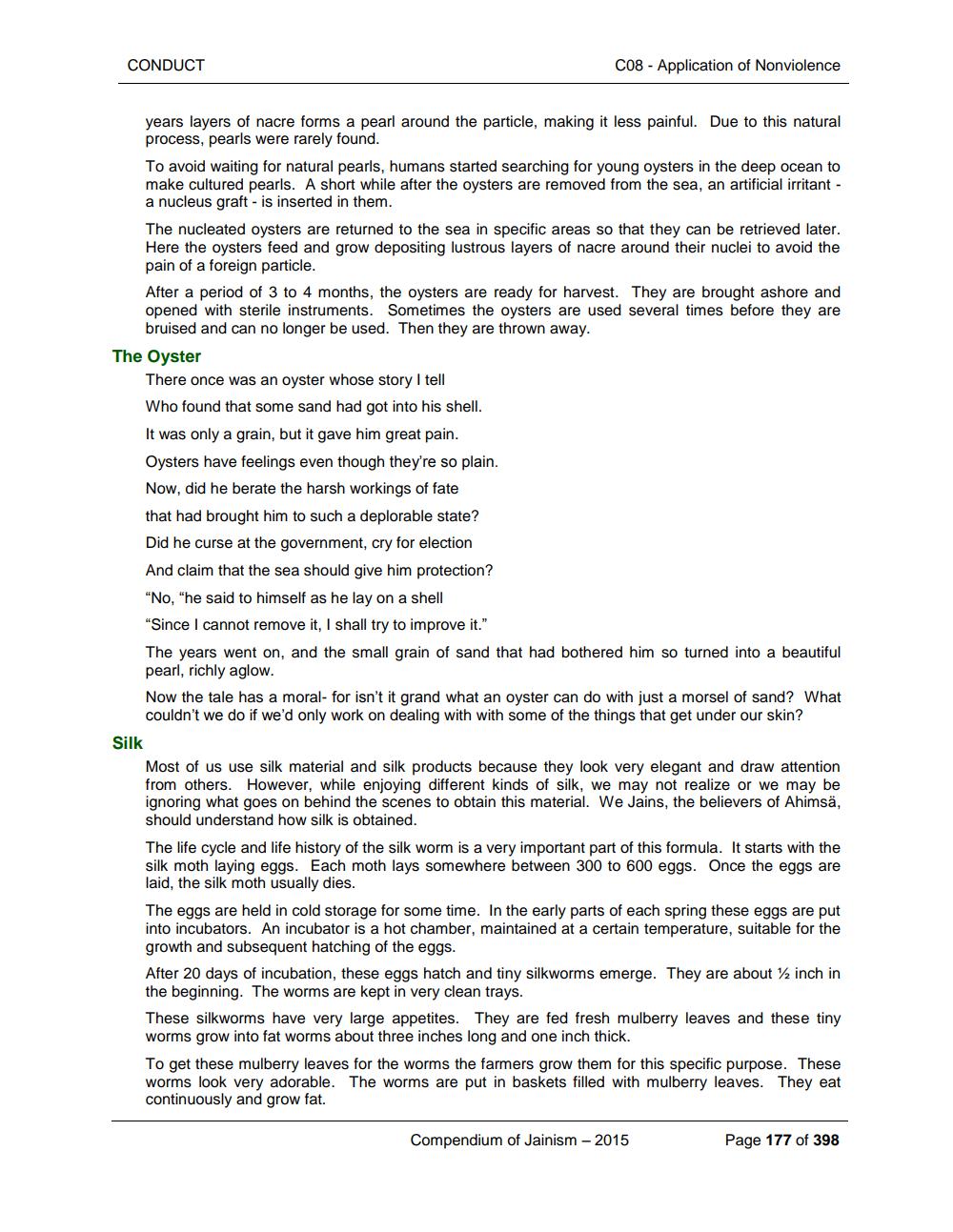________________
CONDUCT
years layers of nacre forms a pearl around the particle, making it less painful. Due to this natural process, pearls were rarely found.
C08 - Application of Nonviolence
To avoid waiting for natural pearls, humans started searching for young oysters in the deep ocean to make cultured pearls. A short while after the oysters are removed from the sea, an artificial irritant - a nucleus graft - is inserted in them.
The nucleated oysters are returned to the sea in specific areas so that they can be retrieved later. Here the oysters feed and grow depositing lustrous layers of nacre around their nuclei to avoid the pain of a foreign particle.
After a period of 3 to 4 months, the oysters are ready for harvest. They are brought ashore and opened with sterile instruments. Sometimes the oysters are used several times before they are bruised and can no longer be used. Then they are thrown away.
The Oyster
There once was an oyster whose story I tell
Who found that some sand had got into his shell.
It was only a grain, but it gave him great pain. Oysters have feelings even though they're so plain. Now, did he berate the harsh workings of fate that had brought him to such a deplorable state? Did he curse at the government, cry for election And claim that the sea should give him protection? "No, "he said to himself as he lay on a shell
"Since I cannot remove it, I shall try to improve it."
The years went on, and the small grain of sand that had bothered him so turned into a beautiful pearl, richly aglow.
Now the tale has a moral- for isn't it grand what an oyster can do with just a morsel of sand? What couldn't we do if we'd only work on dealing with with some of the things that get under our skin?
Silk
Most of us use silk material and silk products because they look very elegant and draw attention from others. However, while enjoying different kinds of silk, we may not realize or we may be ignoring what goes on behind the scenes to obtain this material. We Jains, the believers of Ahimsä, should understand how silk is obtained.
The life cycle and life history of the silk worm is a very important part of this formula. It starts with the silk moth laying eggs. Each moth lays somewhere between 300 to 600 eggs. Once the eggs are laid, the silk moth usually dies.
The eggs are held in cold storage for some time. In the early parts of each spring these eggs are put into incubators. An incubator is a hot chamber, maintained at a certain temperature, suitable for the growth and subsequent hatching of the eggs.
After 20 days of incubation, these eggs hatch and tiny silkworms emerge. They are about 1⁄2 inch in the beginning. The worms are kept in very clean trays.
These silkworms have very large appetites. They are fed fresh mulberry leaves and these tiny worms grow into fat worms about three inches long and one inch thick.
To get these mulberry leaves for the worms the farmers grow them for this specific purpose. These worms look very adorable. The worms are put in baskets filled with mulberry leaves. They eat continuously and grow fat.
Compendium of Jainism - 2015
Page 177 of 398




